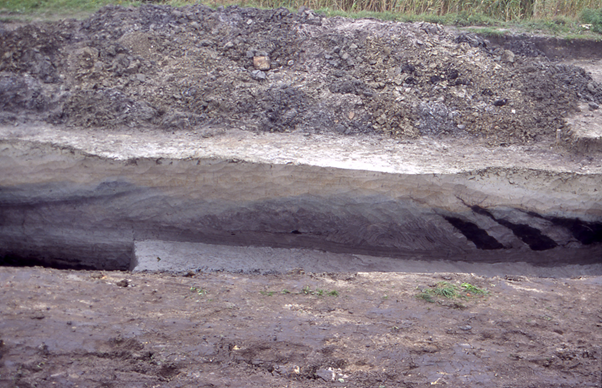A Place on the Planet
Some 12,000 years ago the last Ice Age ended. The ice-caps melted away and a green blanket of dense forests covered North-West Europe. Extensive deciduous woods determined the landscape, the culture and the economy, also in the region that we today call Flanders.
Both hunter-gatherers and farmers made ample use of the forest, where they found food, building materials and fuel. People gathered there to perform rituals. When in the Roman period, at the beginning of our era, there was a marked growth in the population and hence also in the demands for wood and agricultural land, the area of forest shrank. Still, woods continued to dominate the look of the region.
In the Middle Ages, the long period from 500 to 1500, the landscape underwent more definitive, drastic changes. The rise of the towns and the strong development of agriculture led to intensive tree-felling. By the 13th century the area of forest had reached a historic low point.

Bruges, Musea Brugge, Groeningemuseum
At the end of the Middle Ages the area around Bruges was a tangle of dikes, roads, habitation and tidal channels. Remaining section of the Heraldic Map of the Brugse Vrije by Pieter Pourbus (1561-1571).
A Hub for People and Goods
Through the area on the North Sea ran a wide-branching network of rivers. For the transport of people and goods those watercourses were for a long time much more important than overland routes. The rivers and the sea linked the region economically and culturally with other parts of Europe and the world.
Besides the rivers the soil and the relief determined human beings’ freedom of action. The diversity of soils favoured district-bound specialisation. Wheat thrived on rich loamy soils, pigs were fed in oak woods, sheep were kept on salty or sandy ground and forestry and peat-digging were also of great importance. Although the many watercourses ensured cultural and economic exchange, many areas retained their unique characteristics because the soil and the relief were so decisive.
From the Middle Ages on human beings set their stamp more and more emphatically on the landscape. The interaction between man and nature created cultural landscapes like the Campine, the Hageland, the Maasland, Haspengouw and the coastal polders. All those areas owe their unique quality both to the landscape elements present and to the traces of human intervention, such as the building of roads, the erection of buildings or the joint management of common lands.
Focal points
Discover more on this topic
Non-fiction
Perspectieven op het landschap. Achtergronden om landschappen te lezen en te begrijpen
Academia Press, 2007
Miradal: Erfgoed in Heverleebos en Meerdaalwoud
Davidsfonds, 2009
Geschiedenis van de Nederlanden
HB Uitgevers, 2012
Gent. Stad van alle tijden
Mercatorfonds 2016
De Graven van Vlaanderen (861-1384)
Davidsfonds, 2019
De geschiedenis van België in 100 oude kaarten
Lannoo, 2021
De landschappen van Vlaanderen en Zuidelijk Nederland. Een landschapsecologische studie
Garant, 1993
Aan de rand van de wereld. Hoe de Noordzee ons vormde
De Bezige Bij, 2020
Bossen van Vlaanderen. Een historische ecologie
Davidsfonds, 1993
Landschap en landbouw in middeleeuws Vlaanderen
Gemeentekrediet, 1995







